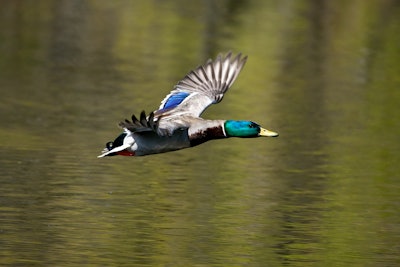
Incorporating lasers that deter wild bird populations into biosecurity protocols can help prevent the spread of highly pathogenic avian influenza (HPAI) between commercial poultry farms.
“Lasers won’t prevent anyone from getting HPAI, but it is another added biosecurity measure that can help with what they’re doing currently,” said Craig Duhr, regional sales lead – Americas, Bird Control Group.
Wild birds can be a major source of disease spread in commercial poultry, especially when it comes to HPAI. The current HPAI outbreak has impacted more than 80 million layers, broilers and turkeys in the U.S.
Other important aspects of biosecurity protocols include PPE, strict access control to farms, surveillance and disease monitoring, and cleaning and disinfection protocols for equipment, vehicles and personnel.
How lasers help
When mounted to a building, the laser can scare wild birds away from unwanted areas on poultry farms with a randomized light pattern. The laser light is controlled by a Bluetooth app installed on a phone. Green light is used because bird eyes assume that wavelength is a physical object.
Lasers offer several benefits compared to scarecrows or plastic owls. Wild birds tend to grow accustomed to these traditional deterrents, which limits its usefulness. Automation ensures that the light pattern is unpredictable, which means that the birds do not become habituated to it and continue to perceive it as a physical threat, triggering their flight-or-fight response.
When trialed on a poultry farm in Minnesota, the laser technology proved successful in keeping wild birds away from unwanted areas, resulting in the removal of all wild birds within 30 days.
To learn more about HPAI cases in commercial poultry flocks in the United States, Mexico and Canada, see an interactive map on WATTPoultry.com.
View our continuing coverage of the global avian influenza situation.



















